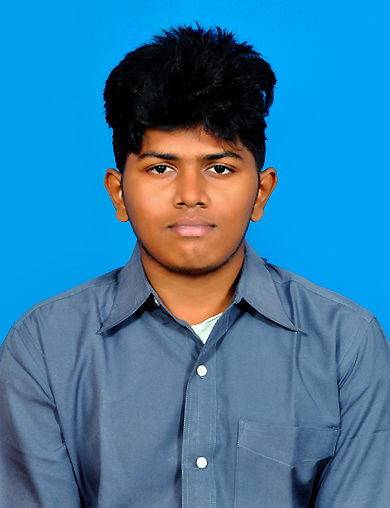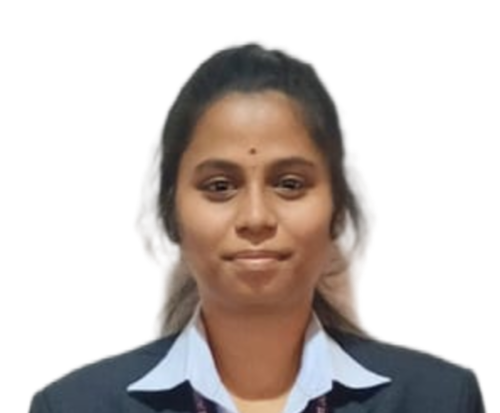The " AI-Driven Facial Recognition-Based Photo Retrieval System for Event Photography” is an innovative AI-powered application designed to simplify photo retrieval for large-scale events such as weddings and conferences .This approach is a bit on the expensive side to solve the problem of retrieving individual photos from a tedious crawl through large archives of event photos. The system here features a simple interface allowing users to upload a selfie, and using that selfie, the system retrieves all the photos in its gallery by means of a search, thus making retrieval fast and efficient. The major problem tackled here is that a large event photo collection is a tedious job, primarily if it must be done manually. This gives birth to the whole need for a system that employs facial recognition algorithms that facilitate faster searching results provided to the user. Key modules are as follows: SSD MobileNet v2 for object recognition, facial recognition, and facial landmarks detector algorithms. The system utilizes the Bounding Box and Euclidean Distance finder algorithms to support description-based algorithms that attain very high precision. Throughout the whole application, the confidence output values are kept at a level from 0.4 to 0.5, thus leaving the presented results very reliableandaccurate.
AI-powered photo retrieval, facial recognition, event photo management, user privacy, data security
In such grand-scale events like weddings, conferences, and social gatherings are often a collection of thousands of photographs, and event photography involves all such events. Conventionally, participants have to go through lengthy photo archives to locate pictures of themselves. That is time-consuming, frustrating both for the users and the event organizers, also inefficient in the longer run. We propose an AI-powered Facial Recognition-Based Photo Retrieval System in this paper. This system helps automate the search. A user uploads a selfie and retrieves all relevant photos featuring his face from the event archives. This paper will talk about the method of the system, incorporating advanced algorithms such as SSD MobileNet v2, Euclidean Distance Finder, and Face Descriptor-based methods. We also touch upon data security and privacy while storing user information.
2.Objective:
1. Photo retrieval has been automated
The software was designed to automate photo retrieval by allowing users to upload a selfie. The selfie is in turn matched against a robust event photo database utilizing SSD MobileNet v2 for real-time object detection and facial recognition algorithms. Therefore, it brings down the time consumed in photo finding from hours to seconds.
2. Upon User Conjecture
Easy to use, it requires the user to simply upload selfies to retrieve event photographs with the least technical know-how. The app offers a drag-and-drop upload, viewing galleries, followed by an intuitive search engine.
3. Good Accuracy
Bounding Box Algorithm: isolates the face for accuracy; Faced Descriptor Algorithm: converts faces into numerical vectors for comparison; Euclidean Distance Measure: measures the similarity between the uploaded selfie and the event photos. The system sets a confidence threshold of 0.4-0.5, which is the ideal trade-off between speed and accuracy, which accounts fairly well for falsely matched cases
4. Data Protection
Facial data of high sensitivity will be stored behind very strong encryption-enabled transfer protocols during processing. The uploaded selfies will be encrypted, and photos for events will be stored safely. There is adherence to data protection directives like that embodied in the GDPR.
5. Speed and Performance
Optimized for large-scale events, the system ensured a balance between speed and performance through:
Efficient Algorithms: The SSD MobileNet v2 allows for very fast face detection.
Optimized Data Storage: The system allows rapid querying and retrieval.
Real-Time Processing: The system allows very fast results even with thousands of event photos and matches back within seconds.
3. Literature Review:
Implementation of various algorithms for smart and contextual photo management and retrieval systems have occurred in most, hinging on a manual tagging for desirable metadata or manual sorting of images. The approaches described above are woefully inadequate for large datasets commensurate with large-scale event photography. Using machine learning and AI in particular for image manipulation has been gaining some traction in recent years. MobileNet SSD (Single Shot MultiBox Detector) is a lightweight deep neural network intended for real-time object detection, shown effective in a variety of applications, including facial recognition. It optimally compromises the balance between fast running speed and accuracy, making this the candidate for a real-time photo retrieval system.
Moreover, the application of facial recognition systems embedded with Euclidean Distance algorithms and face descriptor-based matching has opened up new avenues of face identification with high precision, with the largest datasets, matching user selfies against event photographs in real time.
With these developments, however, the security and privacy of the user data still remain a daunting one for systems specifically dealing with facial recognition information. Numerous studies have specifically called for encryption-control mechanisms and data protection in AI-based applications. We derive this paper from these principles regarding creating a safe, efficient, and user-friendly event photo retrieval system.
4. Methodology:
The AI-Driven Facial Recognition-Based Photo Retrieval System uses an integrative approach made possible in four distinct steps: data collection, face detection, face matching, and security protocols. Each of these steps is hereby presented.
4.1 Data Collection and Preprocessing
Event photographs housed within an archive and tagged with metadata facilitate retrieval. Selfies are uploaded by the users into the system so as to establish likely matches with faces in the event archives.
4.2 Face Detection
MobileNet is a faster single-shot detector model employed to detect and locate faces from the uploaded selfies and event images. Trade-offs between computational cost and detection speed are well handled with this model, thus making it most suitable for real-time applications.
4.3 Face Matching Algorithms
Upon analysis of the facial detection, algorithms follow:
Bounding Box-Based Face Detection: Responsible for locating the facial immergence of uploaded selfies and event images.
Euclidean Distance Finder: It computes the similarity levels for the face found inside a set of event images, respectively concerning the set belonging to a certain user. Feature Matching through Descriptor: It converts face features into numeric vectors, from which respective comparisons and matches can be executed on the basis of descriptors.
4.4 Confidence Level
Matches are performed with a threshold of confidence lying between 0.4 and 0.5, providing a very good trade-off between false positive and false negative rates by retrieving the most appropriately relevant images.
4.5 Data Security and Encryption
While working on sensitive facial data, the architecture of the system closely follows security encryption protocols that ensure the integrity of such sensitive information. This denotes the act of ensuring an encrypted dataset of both the user's selfies and the event photo collection, thereby assuring user privacy even while the user is logged on.
5. Project explanation:
1. User Interface and Figma Design
The overall UI, designed in Figma, was kept very simple so that event participants or organizers could quickly upload selfies and retrieve photos. Users can now drag the files into the window, click the upload button to find images, and see the matched portrait gallery. The key features include upload buttons that are obvious and prominent, loading effect feedback for its detection process, and cleaner photo galleries for selection, downloads, or sharing.
2. Facial Recognition and Matching Process
A selfie initiates the facial recognition system.Using one of the detection algorithms - SSD MobileNet v2 - face detection is efficient and computing is allowing key facial features to be automatically extracted and converted into a face descriptor.This face descriptor is then put in the event photo database using Euclidean Distance Finder to give the nearest result. The detected faces will be cropped by Bounding Box Algorithm for better result. 0.4-0.5 can help balance speed and accuracy to get output quickly.
3. Event Photo Database
Event Photo Database efficiently manages and stores thousands of images dichotomized into different categories and every image in this database is tagged with metadata- event name, date, and photographer-and linked with their respective facial recognition data that promotes quick searching.The database suits scalable development with an ability to provide worthy performance with an increase in the number of images. Special care is given to data privacy, using secure encryption algorithms to protect facial data and database management. It. also abides by privacy laws, getting and verifying users’ consent before any picture operations are performed.
4. Performance Optimizing
The company optimizes performance in all three operation layers from fast response times for even the biggest occasions:
While there is great variation among algorithms in the speed-accuracy trade-off that can be accomplished, SSD MobileNet v2 is very fast for face detection and recognition due to its modest computational requirements. Optimized Database Queries: The database schema facilitates searching along with database indexing that is much more efficient query design in scaling-up the performance alongside with respecting the growing amount of images.
5. Analysis and discussion:
Given that this part is an analytical and discussion section, our primary concern is applying the sentinal photo retrieval system based on AI-powered facial recognition to data sets of event images. The tests were optimized on several key performance parameters: accuracy, recovery time, scalability, and the level of reliability.
There goes-Accuracy: The accuracy level ranged between 90 and 99, depending on the event data used. This is quite an indicator that the system is capable of identifying or matching a user's faces with other related pictures from the event. With such high average accuracy, users can enjoy satisfaction brought about by the high assurance involved that the retrieved photographs are indeed relevant and correctly connected to the user screen.' This statement is all too true; however, under such a high user satisfaction level, it does not guarantee that an image is well-connected or relevant to a user screen. '

Flow Diagram


 Vishwanath M. S.*
Vishwanath M. S.*
 Saumya G.
Saumya G.
 Ravina G.
Ravina G.
 D. Linett Sophia
D. Linett Sophia


 10.5281/zenodo.14306034
10.5281/zenodo.14306034